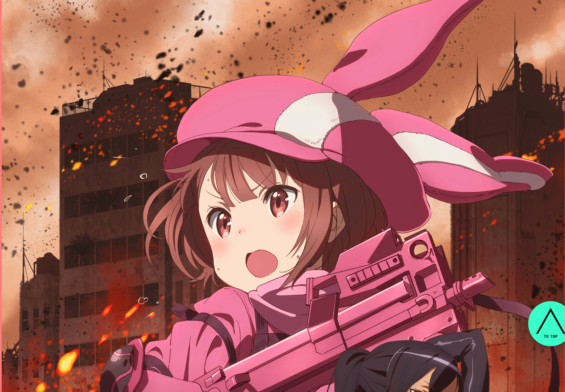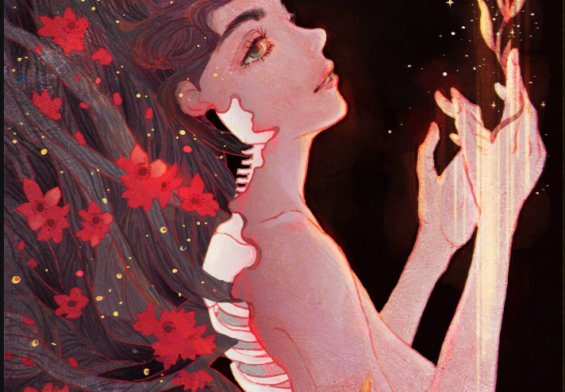In an interview with CBR, Crunchyroll Executive Vice President Terry Li unveils the launch of Crunchyroll Games’ Game Vault for subscribers.

Crunchyroll, the premier platform for streaming anime worldwide, has expanded its Crunchyroll Games division in a major way for premium subscribers. Folks at the Mega Fan and Ultimate Fan tier will be able to play five titles for the platform’s Game Vault without ads at no additional cost, including Captain Velvet Meteor: The Jump+Dimensions, River City Girls, Wolfstride, Behind the Frame: The Finest Scenery, and iBento. In addition to the titles on Game Vault, with more on the way, Crunchyroll Games is hard at work on the upcoming standalone game One Punch Man: World, an immersive experience that adapts the enormously popular anime series of the same name.

CBR: With Game Vault, you’ve got quite the launch library, including River City Girls and Captain Velvet Meteor: The Jump+Dimensions. How did you want to curate this opening wave of titles for Game Vault?
Terry Li: For us, a big part of it was curating a game selection that was broad enough to appeal to multiple areas of our fan base. We’re already doing free-to-play games today, but most anime free-to-play games on mobile are going to be [geared] heavily toward a certain type of monetization hook. They’re going to be RPGs, action-driven, and they have a gacha mechanic. For a lot of those titles, there’s an audience overlap, so you’re basically serving the same core fans. I think the goal of Game Vault was to serve the fans that are a bit broader because our anime audience over on Crunchyroll is broad. That was the motivation.
I’m really excited about River City Girls and anything coming from Arc System Works. How was it working with your developer partners to come up with these launch titles for Game Vault?
The inspiration for those all came slightly differently. For example, Captain Velvet Meteor made a ton of sense because it was partnering with SHUEISHA GAMES. They’re already one of the biggest, well-known brands in Japan and one of our biggest publishing partners, but specifically because it was a good mix of an original game format IP and included a lot of anime IPs into it, which is a super-cool concept. For River City Girls, it was a throwback to the old beat’em-up days that we wanted to include. You don’t really see it that much anymore, especially on mobile, so that was a cool feeling to have. When you play through the story, the comic panels look very anime-esque, so it made a ton of sense.
For iBento, it was a desire to present a game that felt very fundamentally different from some of the other games. Some of the other games, whether they were side-scrollers or beat’em-ups, felt more like action, whereas iBento takes a little bit of a different pace. Aside from the audience, even for a specific format, we went after it. WayForward, on River City Girls, they were super easy to work with. All of our partner studios know that they would enjoy working with Crunchyroll and working with our fans. All of the partners that we have, including for this first round, were like, “Let’s go! Let’s do it!” It just made total sense. We didn’t have to pull anyone along. It was amazing.

This has been a big year for Crunchyroll, with the partnership with Sony Music launching at the beginning of the year and now this expansion of Crunchyroll Games for subscribers. How is it working within that awesome synergy?
That’s always been our long-term goal, hearkening back, even to prior days. [In] the last couple of years, we’ve grown at a pace where a lot of these other endeavors, like music and subscription games, started to make a ton of sense and make a big push because of the sheer size of the audience now. From a games perspective, we’ve always wanted to add a library of games for the subscribers, but we were always torn between how much we wanted to launch. Did we want to throw one or two out or a dozen out?
That decision-making process actually took us back and forth quite a while until we realized not to worry about the volume of games but to worry about which games we can have available at launch for the quality of the actual delivery to come out. Once we anchored around these four or five titles, we decided to push these out and get people on board and see how they feel. Based on how they interact, we can add more. We have a long pipeline of 20-30 other games that we want to add in, but we’ll start to see this form as well.
One game I wanted to talk about in particular is One Punch Man: World, which really lives up to its subtitle. How was it building this detailed, immersive game?
One Punch Man: World is on our free-to-play side and has been quite an endeavor. The game itself, like you said, lives up to its name and is pretty massive, and that’s also reflected in the amount of time and resources that [developer] Perfect World ported. The team that’s working on this is massive. We haven’t really ever gone after a title this big to this degree because, historically, we were very focused on mobile titles. One Punch Man: World is the first case where we’re really targeting a PC-first experience. The game is meant to be a PC game with a mobile [port], not a mobile game with a PC [port].
The level of expectation, quality, and visual style is pretty deep and different. It is a big swing for us, and one of the big things that we wanted to test with this title is how big can we amplify a big title, cross-platform game. Crunchyroll itself is cross-platform, so it wouldn’t make a ton of sense if we were like, “Only mobile games” because a ton of our viewers watch on set-top boxes, the web, and living devices.
This is a deep bench of playable characters, each with their own combat style that speaks to each of their personalities. How is it working on such a variety of combat mechanics for the game?
The variety and mechanics of the game itself are super-deep. We did playthroughs and a demo at GamesCom, and you could tell people we’re sitting there trying to figure out all the different, intricate ways not to get hit by the first boss with our deep combat mechanics. One of [the] areas that we were trying to evaluate wasn’t just the depth of our mechanics. You want deep mechanics to create a deep experience, but you don’t want it to be super complicated so that a new player goes, “This is difficult!” Even the first boss can be difficult if you’ve never played an action game because we just throw you in. [laughs]
Once you get past the tutorial, the game opens up the world. If you’re into that, you’re like, “Awesome, I just finished the tutorial, and here is everything I can do!” If you’re not used to that, you might be like, “Whoa, there’s too much stuff for me to do!” Sometimes, you almost want to be handheld, and we’re still tweaking that balance and will hopefully have that by the time the game actually launches.

After working on this game in a relative vacuum for so long, how is it seeing people from the outside playing it at GamesCom and with the recent closed beta test?
The CBT went really well! Most people at least thus far with these playtests, don’t expect it to be as crazy and good as [it is]. I think most people are coming into it expecting this to be the PC version of a mobile game with a slightly bigger screen. When we look at the session times, they’re really strong. The caveat with beta tests is that you’re targeting people who are going to give you the right feedback so, generally speaking, they’re more engaged.
Looking at our D1, D3, [and] D7s, they’re super-strong right now. It gives us a lot of hope and conviction that the tweaks we’ve been making with every iterative CBT have been correct because they’ve been increasing in terms of user session time, number of sessions, and overall retention rate as well.
You spoke about the high bar of quality games on Crunchyroll’s Game Vault. What do you look for in a game to get that Crunchyroll seal of approval?
It’s actually pretty multifaceted. The overall genre and focus have to be appropriate for our audience. The thematics can’t be inappropriate for our audience. The second piece is that we do look at the relative quality bar for the art style and gameplay for that genre. You can tell from our initial slate — River City Girls, Captain Velvet Meteor, Wolfstride, iBento — they’re all different genres. We can’t necessarily compare art styles across the board, but within that genre, we want to make sure that this is reminiscent of an anime or animation-esque format. It is a very strong quality bar.
For example, with River City Girls, if you’re not familiar with that style, you’d think that this looks super-different from Captain Velvet Meteor. The latter looks much more like anime, and the River City Girls game doesn’t. River City Girls, within the context of the game itself, with that pixel-style [it] is actually very high-quality. It’s a beautifully rendered game. That’s a high bar for us.
A big part of our checkbox is the developer, how engaged they are, and how easy they are to work with because, at the end of the day, the game may look great and play great, but it’s an engagement experience for our fans. If developers don’t treat this [with] a certain level of prioritization or love, it’s going to impact our user experience. Before we pick up these titles, we have deep conversations with the developers about our philosophy and what we’re trying to do. We’re trying to build a brand and great experiences.
We don’t want these games to have huge monetization hooks. In fact, all the games in Game Vault are ones without long-term, structured monetization. We’re not trying to do that. We’re just trying to create and deliver premium-first experiences that complete a storyline.
This has been a big year for Crunchyroll Games across the board. Terry, what can you tease about its upcoming plans as we get close to 2024?
The biggest thing is that we’ve got 20–30 titles we’re evaluating that we want to push in the next 12–18 months. It’s not about the pace of bringing these titles on. We want to be fair to our partners, not just load our portfolio with 20 titles and have them there. We want to load two or three every month so that each project feels like we’re treating them with the right spotlight and so that users get the chance to see it. That’s what we’re excited for — the long-term opportunity we have for Game Vault.
The Crunchyroll Game Vault is now open for subscribers at the Mega Fan and Ultimate Fan tiers on Android devices, with the iOS launch coming soon. Look for more One Punch Man: World news ahead of its launch.




